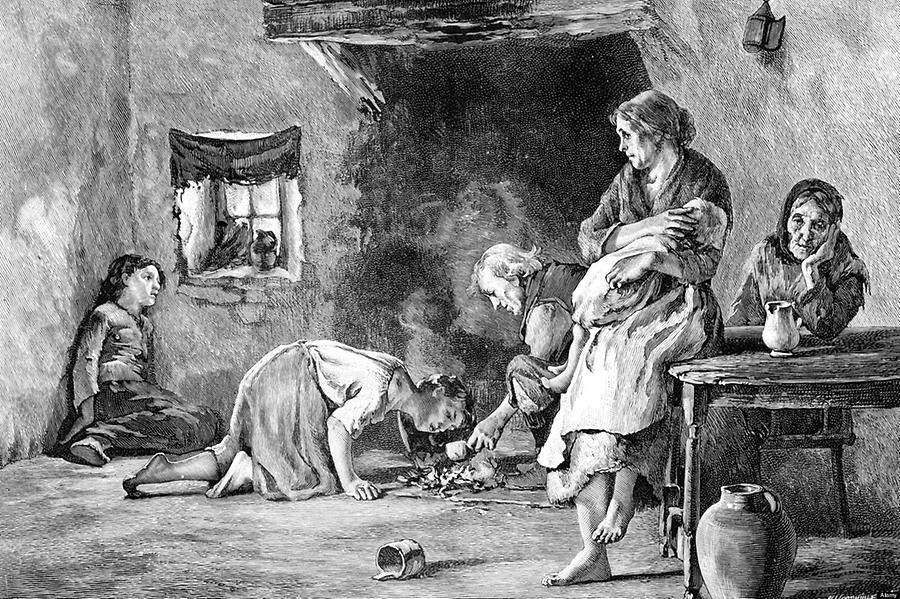Poverty in Mediaeval Times#

Poverty in Mediaeval Times, 2015, © Gerhard Huber, under CC BY-NC 4.0 +Edu
While clergy and nobility lived in clover, the people in their care lived in poverty that was almost unimaginable, entangled in the narrow corset of status groups. The social order of the Middle Ages consisted of four classes, the clergy, the nobility, the free citizens, and the serfs, slaves and villeins. The peasants, sometimes classified as free and sometines as serfs, constituted the majority of at least 90% of the population. The entire power was exclusively down to the nobility and the clergy. The latter legitimized the system of the estates of the realm as God-given. Since most of the people in mediaeval times were illiterate, they could not verify the doctrines of the church. Hardly anyone revolted against a life of poverty because, thanks to a religious brainwashing, it was believed that the destiny of every human being was predestined by God anyway. The reward for a life full of deprivation is then - supposedly - waiting for him in the after-life.
Während Klerus und Adel in Prunk lebten, hausten die Schäfchen Gottes in kaum vorstellbarer Armut, eingeklemmt in das enge Korsett der Stände. Die Gesellschaftsordnung des Mittelalters bestand aus vier Ständen, dem Klerus, dem Adel, den freien Bürgern sowie den Unfreien, Sklaven und Leibeigenen. Die Bauern, die manchmal als Freie und dann wieder als Unfreie eingestuft wurden, stellten mindestens 90 % der Bevölkerung. Die gesamte Macht lag ausschließlich bei Adel und Klerus. Letzterer legitimierte die Ständeordnung als gottgegeben. Da die meisten Menschen des Mittelalters Analphabeten waren, konnten sie die kirchlichen Lehrmeinungen nicht überprüfen. Kaum jemand begehrte gegen ein Leben in Armut auf, denn dank einer religiösen Gehirnwäsche glaubte man, das Schicksal jedes Menschen sei ohnehin von Gott vorherbestimmt. Der Lohn für ein entbehrungsreiches Leben wartet dann - angeblich - im Jenseits.